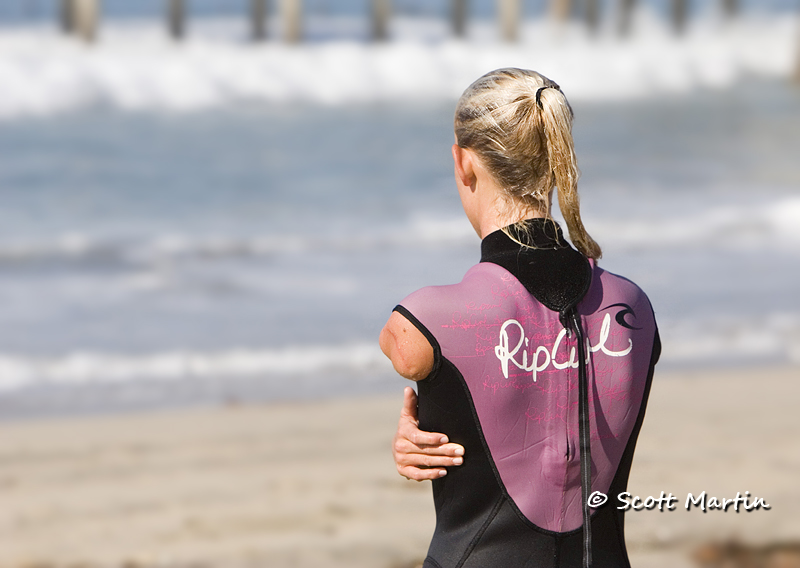
by Scott Martin Photography | May 1, 2011 | Blog, General
Although the spring warbler migration is ramping up nicely, this first blog entry for May will contain no bird images. Instead it is designed to get you into your local theater to view the movie “Soul Surfer” which tells the incredible story of professional surfer Bethany Hamilton, who lost her left arm in an attack by a fourteen foot Tiger Shark on October 31, 2003, while surfing off the coast of Kauai, Hawaii. Bethany Hamilton was only thirteen years old when she lost her arm yet miraculously she was back in the water one month later and competed again in January 2004. In 2005 Bethany won her first national title and then realized her childhood dream by turning professional in 2007.
My wife and I saw Soul Surfer a few weeks ago and enjoyed it immensely. The movie chronicles Bethany’s life and that of her close-knit family, whose lives revolve around surfing and a strong faith in the Lord; a faith that sustained Bethany through the loss of her arm and was her strength to continue on surfing despite the humanly impossible odds. This movie is a must see movie.
In October 2006 while vacationing in California, Deb & I were at the ISA-XXI World Surfing Games being held at Huntington Beach. Many countries from around the world were represented at these games, including the American Team of which Bethany Hamilton was a member representing her home state of Hawaii. It was an amazing experience for us as we were able to photograph the competitors and actually ended up alongside the Hawaiian team, who explained in detail how to spot developing waves and gauge which ones would potentially result in the perfect wave to ride with the short boards they were using at the games.
The following are some images of the Soul Surfer, Bethany Hamilton. I trust they encourage you to go see the movie (and plan a trip to Huntington Beach :)). The surfing images are fairly large crops as they were taken with a 70-200/2.8 IS lens mounted on my first DSLR, the Canon 20D (which you will get a glimpse of in the last image).
Contemplation

Panoramic crop

Riding the wave.
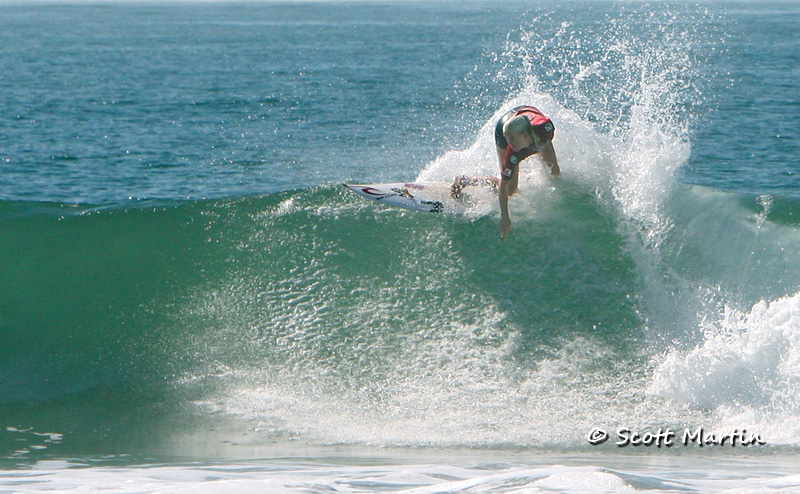
Part of the Hawaiian team.
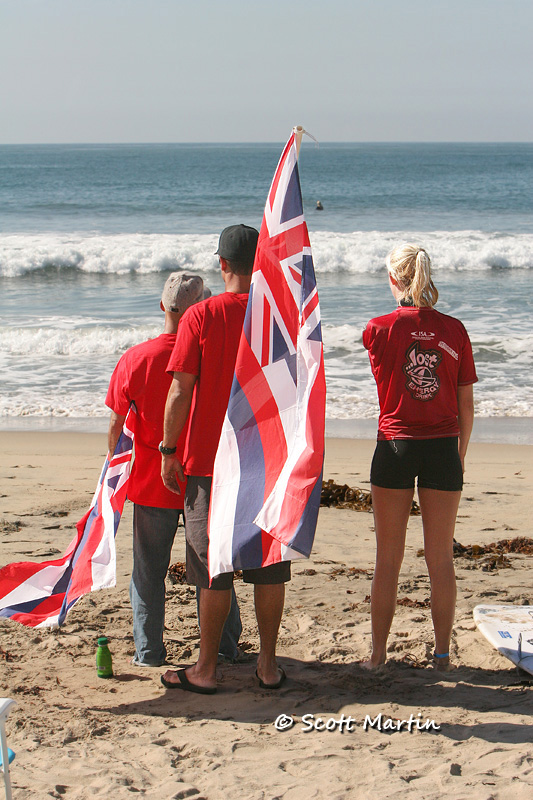
Heading out for another session.
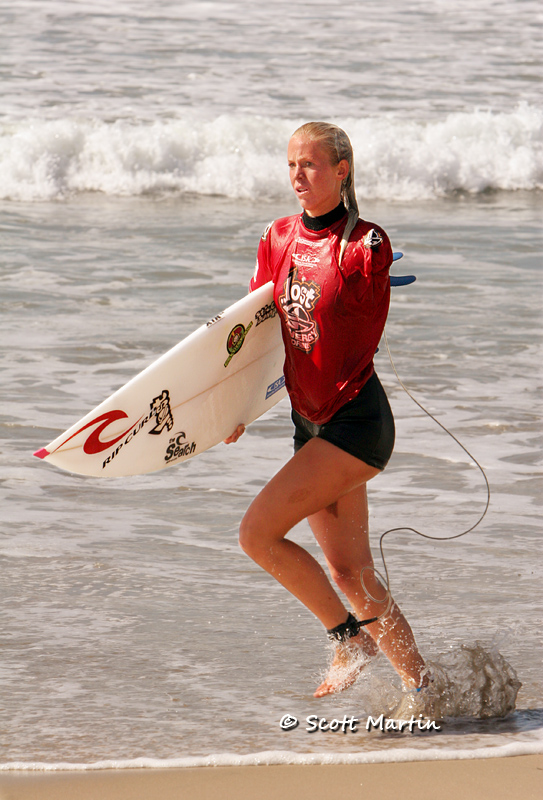
.
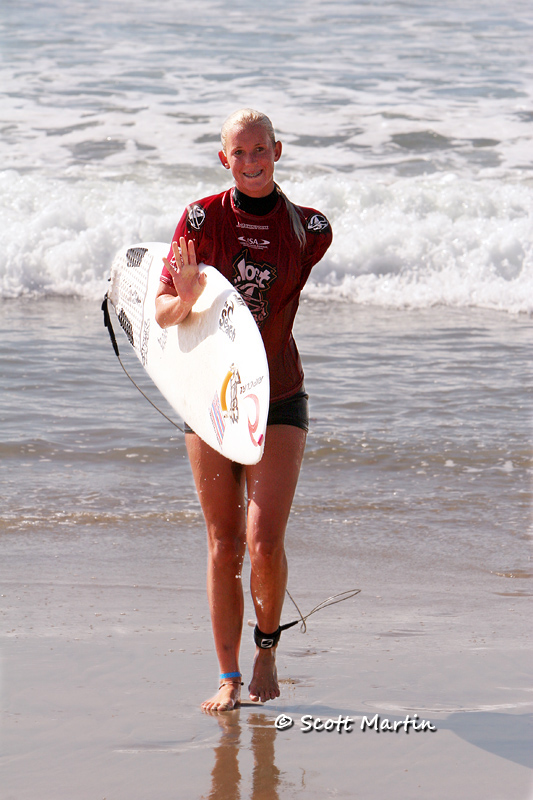
The Hawaiian Team with the Huntington Beach Pier in the back ground.
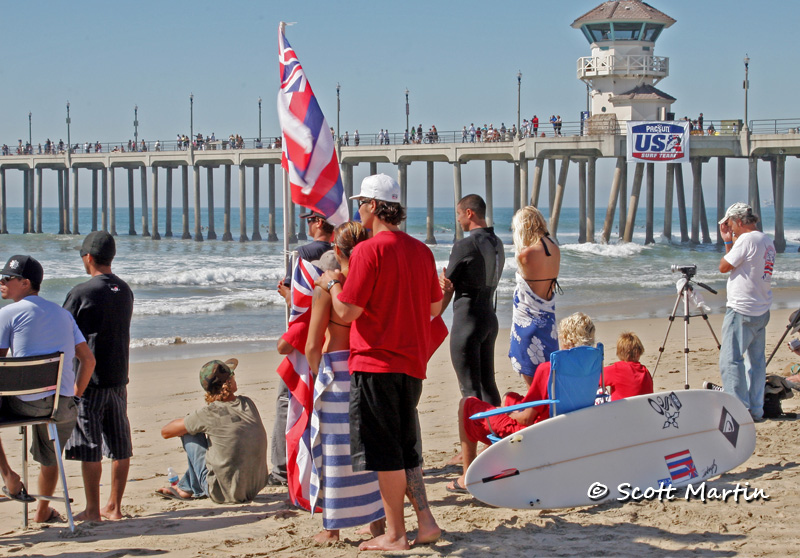
And a shot Deb took with her Canon SD-700
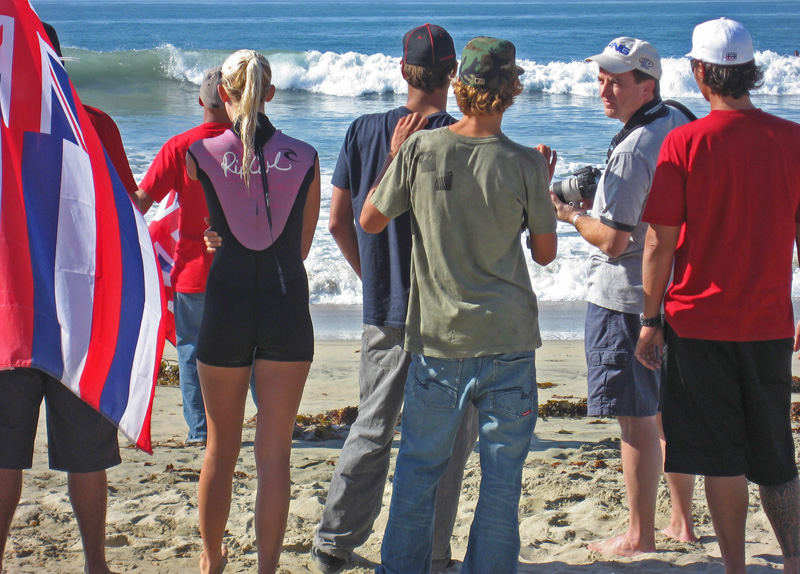
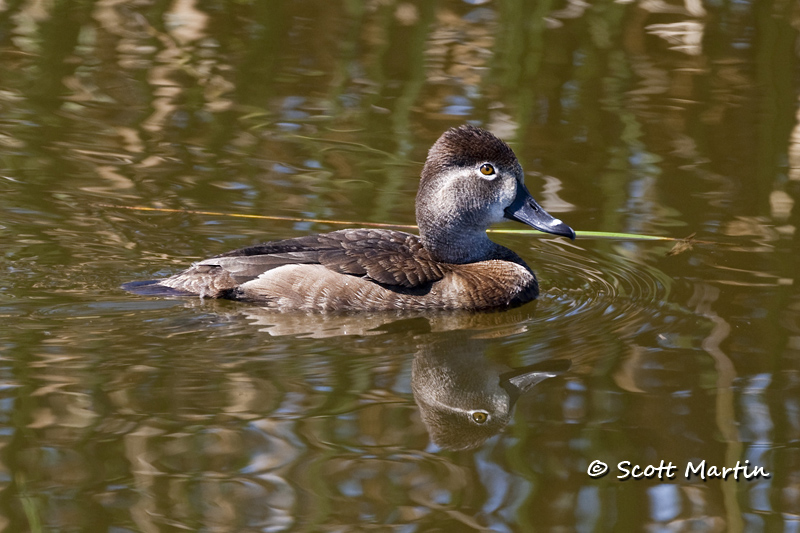
by Scott Martin Photography | Apr 25, 2011 | Birds, Blog, Shore Birds & Waterfowl
The medium-sized Ring-necked Duck is a common duck that breeds in the Northern United States and Canada and migrates to the Southern United States during the winter months although it has been found in western Europe, Costa Rica and Central America on occasion. This duck prefers fresh water lakes, ponds & rivers however has been seen on salt water bodies in the south. The Ring-necked duck is a diver whose diet consists of plants, mollusks, insects and small fish.
The Ring-necked Duck was first described in 1809 and was named for its chestnut neck ring, which is rarely seen except at close range. One of the most noticeable field marks of this duck is its prominent white bill ring so perhaps this duck would be better known as a Ring-billed Duck!
The Ring-necked duck does not associate in large flocks hence they are often only seen in pairs. They are prolific egg layers with anywhere from six to fourteen eggs laid which are then incubated by the female for approximately one month while the male brings food to the nest.
This first image is of a female.

Here is the male.
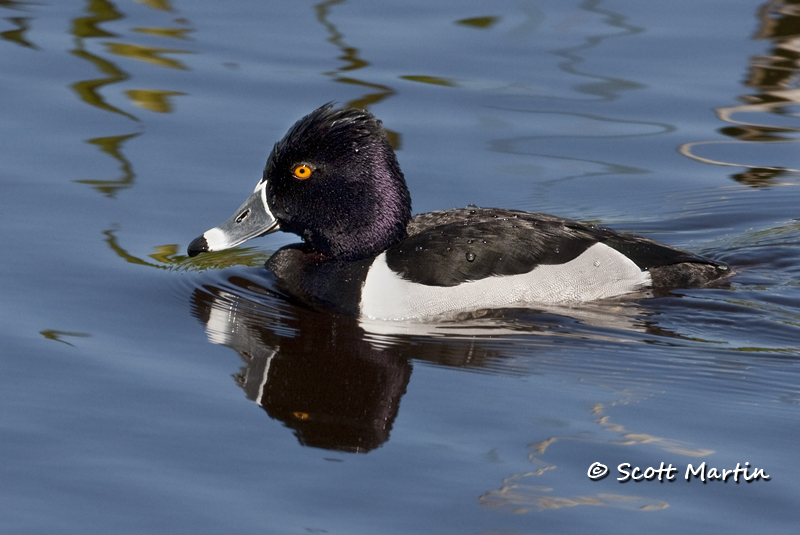
I apologize for the rather high angle these images were taken from, however the fairly steep banks along the ponds at the Viera Wetlands (and the gators) don’t allow one to get as low to the water as one would like.
Lastly, for those of you follow this blog regularly, I’m trying something new. The first mention of a bird in this and future blog posts will be in bold and if you hover over the name in bold with your mouse, the scientific name of the bird will be displayed in a gray text box. I’m teaching myself HTML & CSS with the hope of providing a better blog experience when you stop by this site.
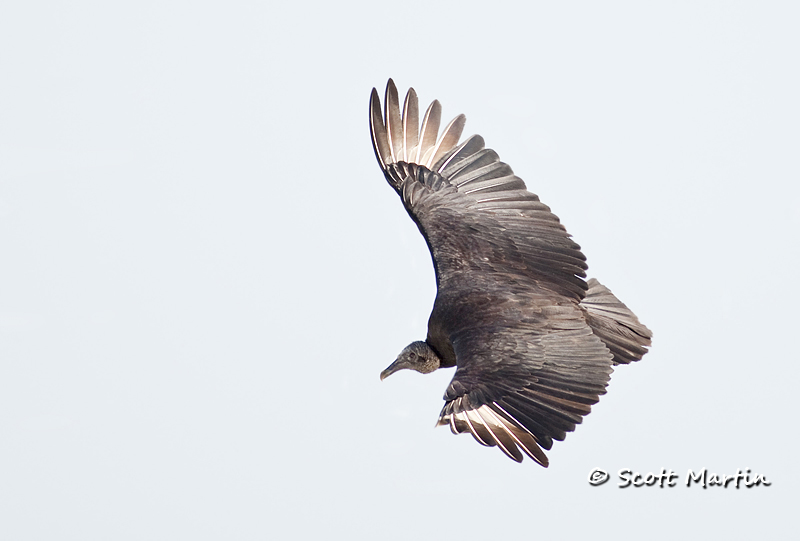
by Scott Martin Photography | Apr 19, 2011 | Birds, Blog, Raptors
Pretty much wherever you drive in the United States and the southern portions of Canada you will see vultures soaring overhead, with that characteristic wobble while gliding giving away their identity. If you are in the Northern States or Canada, you will probably be seeing the larger red-headed Turkey Vulture as the smaller and dark headed Black Vulture typically stays in the Southern & Eastern States. These two species are pretty much the only Vultures you will see in North America. The Turkey Vulture is the most common of the two and also enjoys the widest range with the global population estimated at 4,500,000. The Turkey Vulture is also known as a Buzzard.
Neither the Black Vulture or Turkey Vulture posses a syrinx (the vocal organ of birds) and therefore have no song to sing, resorting only to grunts and hisses which you will often hear when fighting over food. The two species of vulture are very similar with the Turkey Vulture being slightly larger than the Black Vulture. The most obvious difference between the two is head colour, red for the Buzzard and dark for the Black Vulture. A less obvious difference between the two is that the Turkey Vulture holds its wings in a slight ‘V’ formation while gliding where the Black Vulture holds its wings in a parallel position when soaring. While both types have superb visual acuity the sense of smell is much better in the Turkey Vulture which it uses to its advantage when looking for carrion, the primary food source for both vultures.
Vultures are species of birds we photographers often overlook, perhaps because we don’t have the opportunity to get close to them or perhaps it’s that they are not as glamorous as other birds, or even other scavengers like the Crested Caracara. Anyway, this winter I made the attempt to get some decent images of vultures and I trust you enjoy them. All of the Black Vulture images were taken at Cherie Beach which is on the Atlantic Coast of Florida just south of Cape Canaveral and were all shot using the Canon EF 400mm f/5.6 L lens. The image of the Turkey Vultures was taken from a boat in Lake Toho using the Canon EF 500mm f/4 L IS lens.
The 400/5.6 is probably the best lens available for in-flight shots because of its light weight, compact size and super fast auto-focus speed.

.
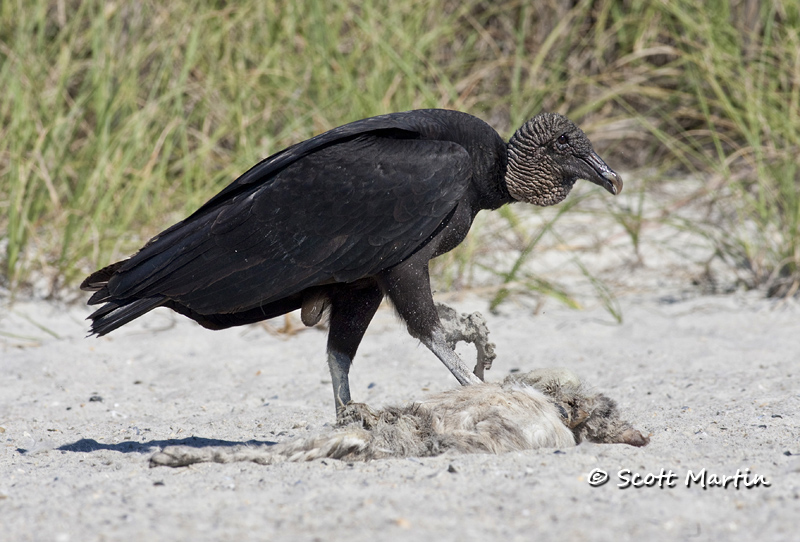
.
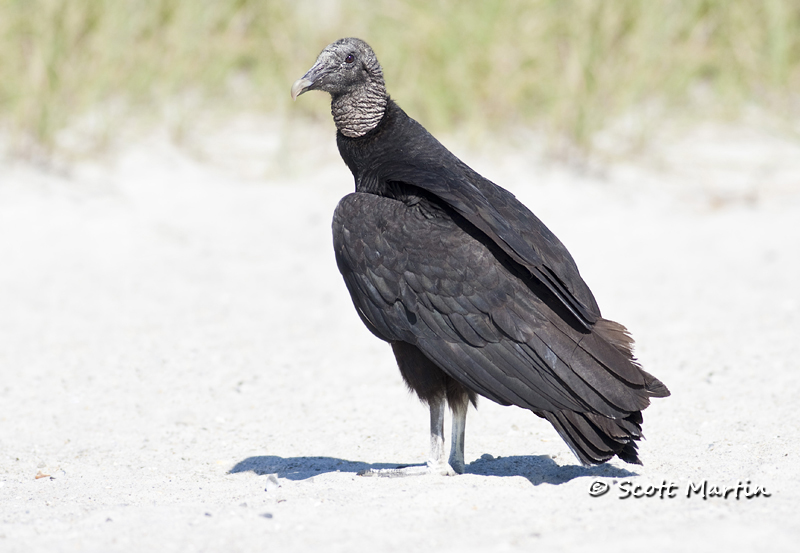
.
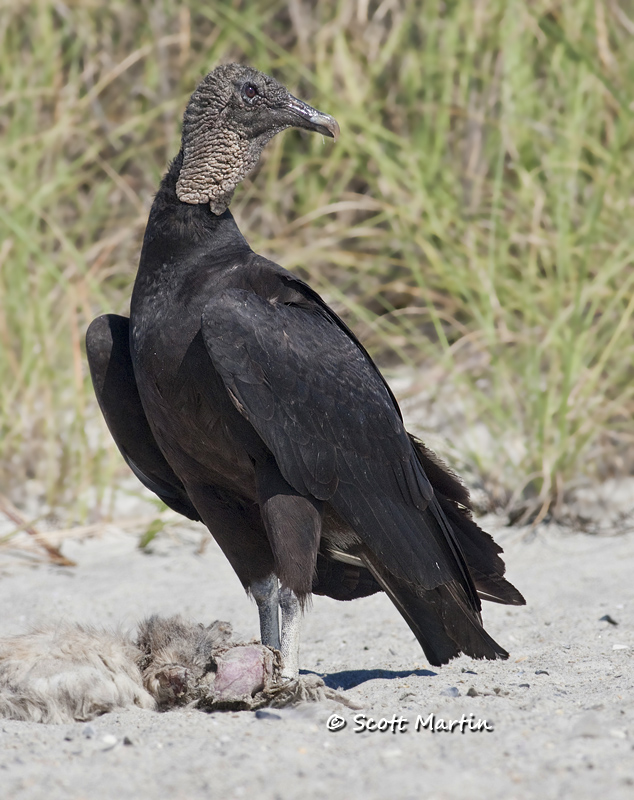
.
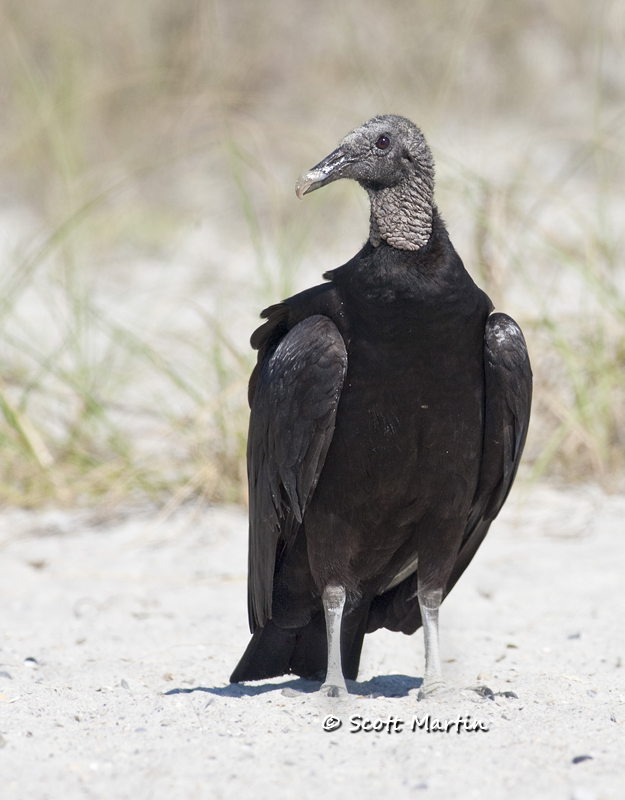
Two Turkey Vultures perched in a tree….this shot almost makes them look good 🙂
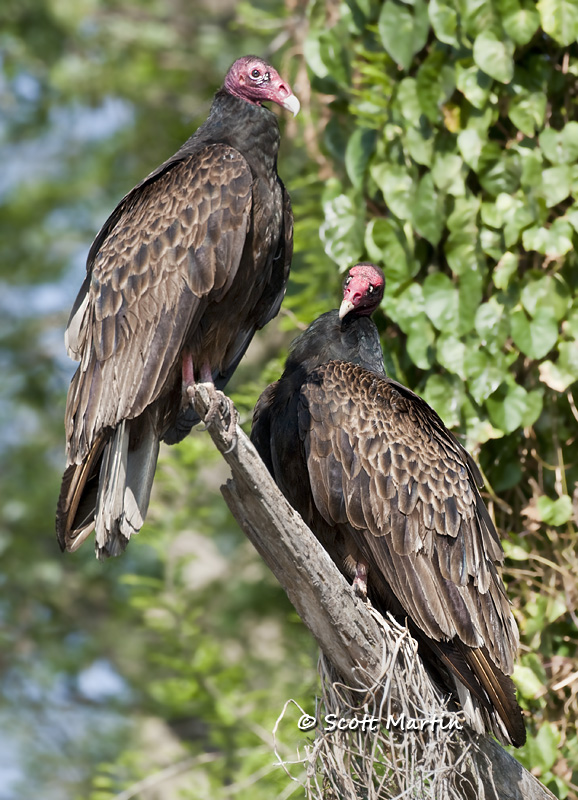
The last two images were taken a year ago at the Viera Wetlands and are of a Crested Caracara which I mentioned above as a better looking scavenger than the vultures. These images are unique as the Coot leg being taken back to the nest for the fledglings was not collected as scavenged carrion but rather the Coot was taken alive by the Caracara, a phenomenon I had not witnessed before as Caracara are primarily scavengers.
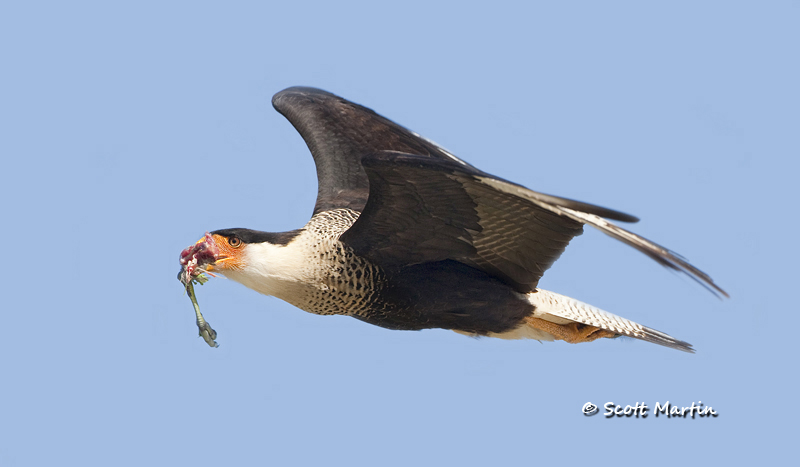
.
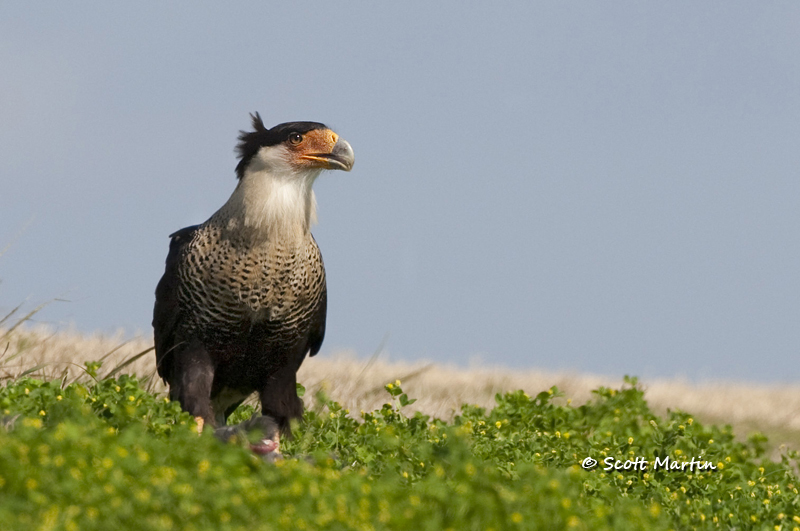
More images can be seen in the Vultures & Caracara Gallery
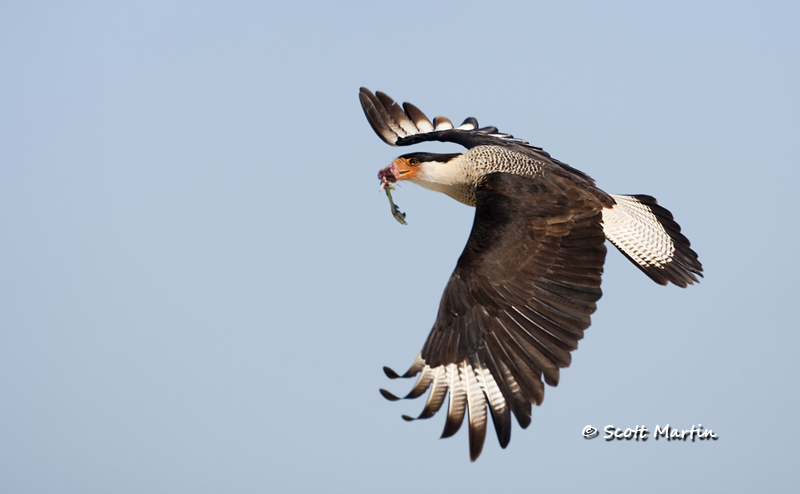
by Scott Martin Photography | Apr 16, 2011 | Birds, Blog, General
The Viera Wetlands are a series of water retention ponds that are part of the town of Viera’s waste management system. Viera is located on Florida’s Space Coast approximately 15 miles south of Cocoa Beach. The Wetlands provide the perfect environment for both resident and migratory birds with the variety of species present truly amazing. It’s common to photograph twenty to thirty species on a good day. Besides birds you can also count on seeing alligators and the odd snake as well. For a more complete description of the Viera Wetlands please follow this link.
Viera is also a great place to meet other birders and photographers who are always happy to point you towards a new bird or tell you about a rare migrant they’ve seen or photographed.
Besides the tremendous variety of birds present at Viera it is also a place where the birds seem quite used to the presence of people and will allow surprisingly close access, especially if you are patient. In terms of gear I’ve used everything from a 24-105, 70-200/2.8, 400/5.6 and 500/4 with a 1.4xTC for 700mm; so when heading to Viera bring everything you’ve got because you will probably be able to use it all!
The following images are some favourites taken at the Viera Wetlands over the past few years (all taken during the month of March when we vacation in Florida each year).
Crested Caracara

Osprey with fish
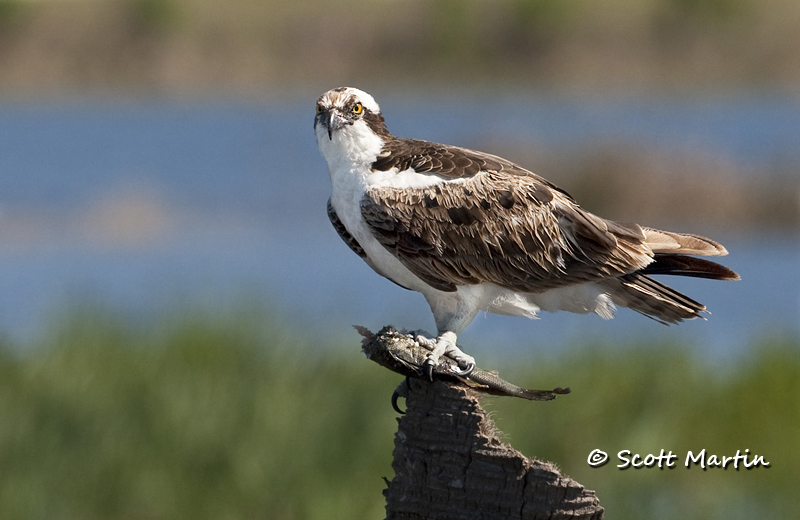
Limpkin
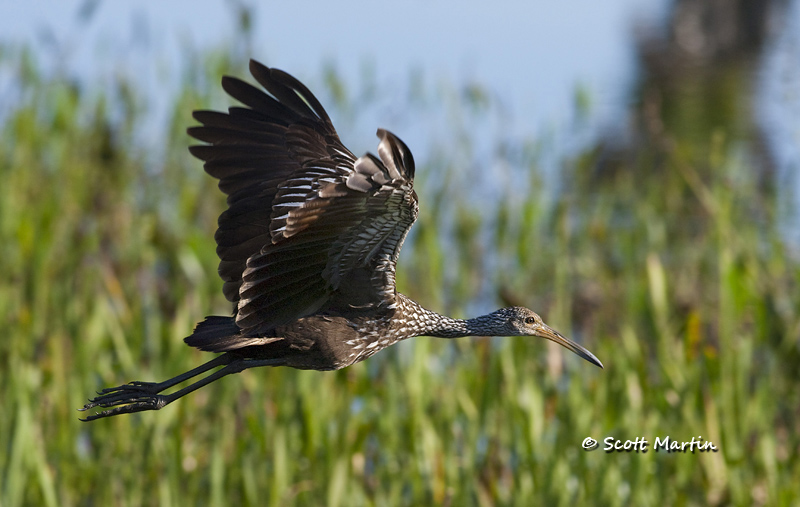
Cattle Egret
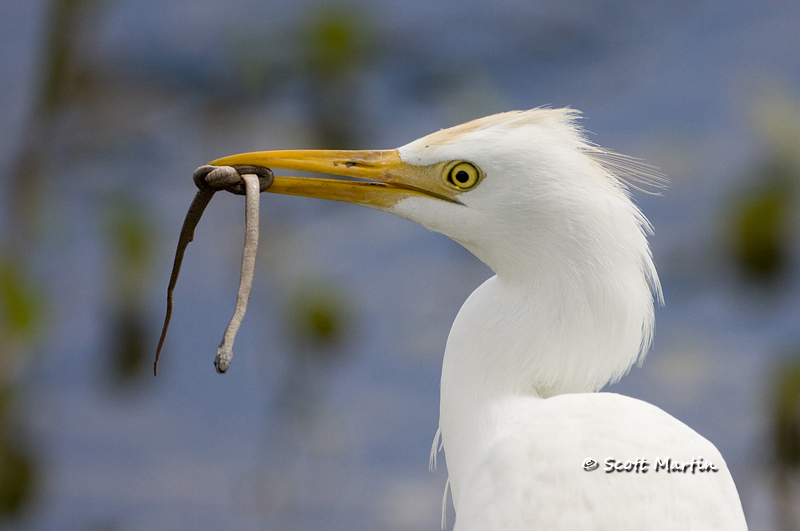
Least Bittern
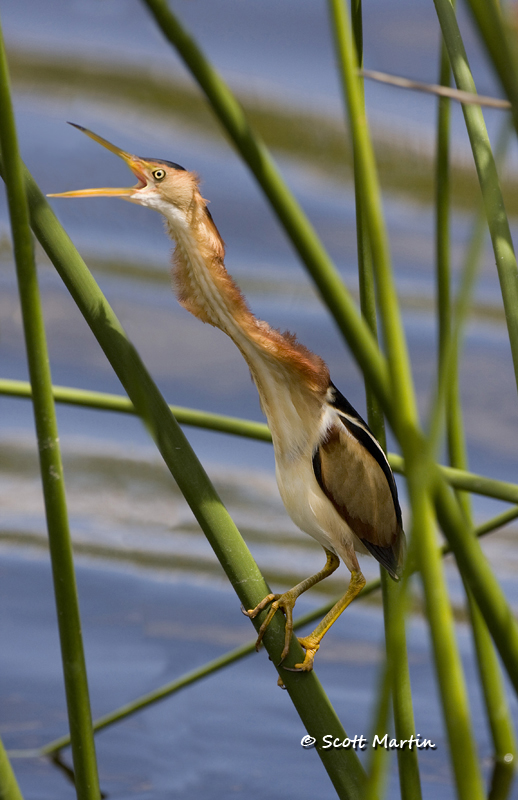
Northern Harrier
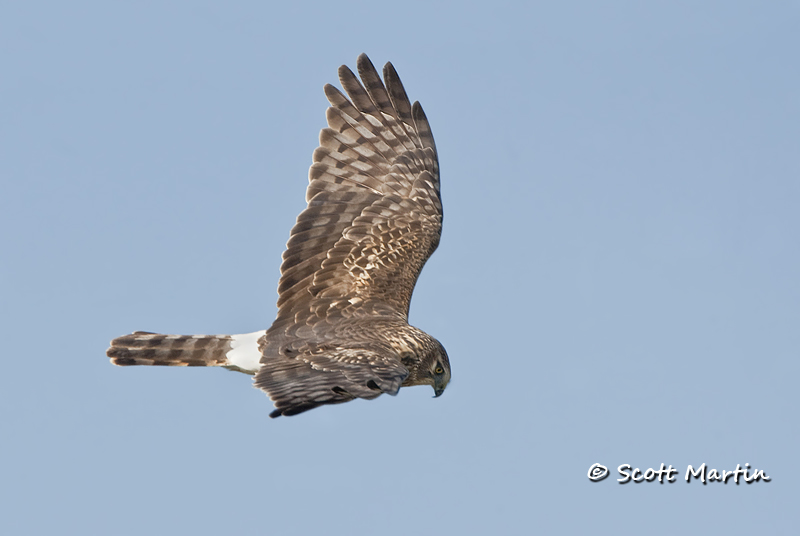
Blue Wing Teal
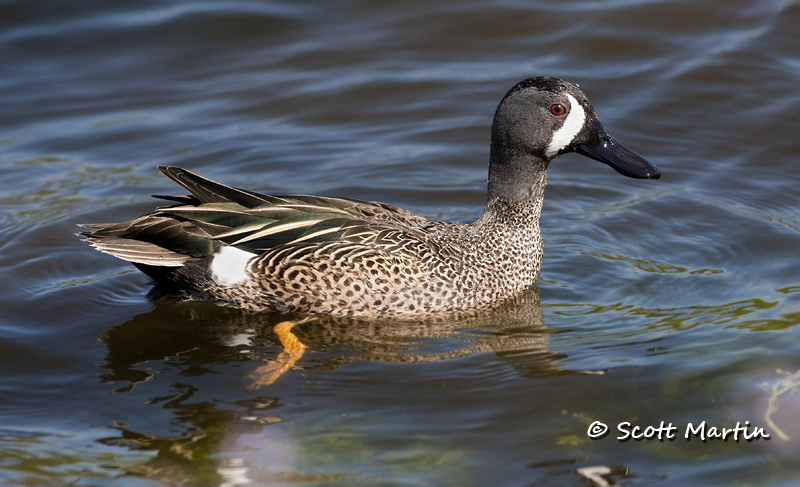
Ring Necked Duck (which is a new species for me, taken last month)

and the female

And finally here is one of those alligators I told you about. This is the first ‘gator I’d photographed and it was about eight feet long. As I was lying on the grass about fifteen feet away to take this full frame shot, it donned on me that it probably wasn’t a wise thing I was doing. Fortunately he wasn’t hungry.
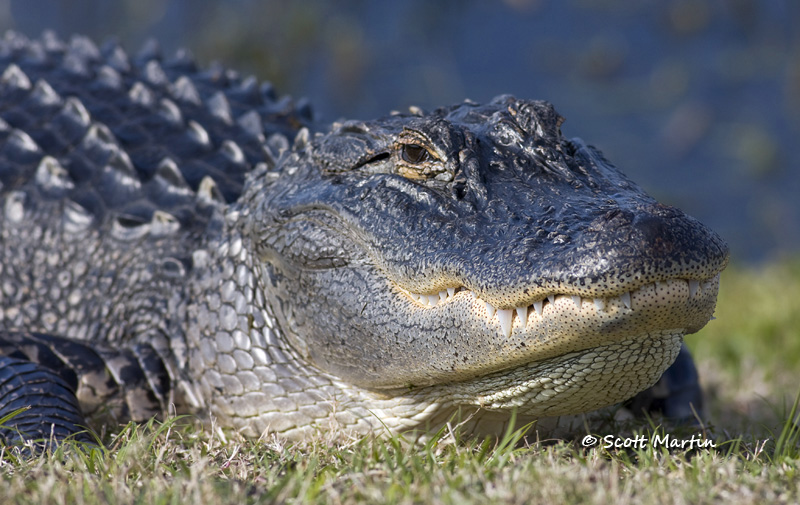
Make sure the next time you are in Florida you include a trip to the Viera Wetlands. You will be glad you did.
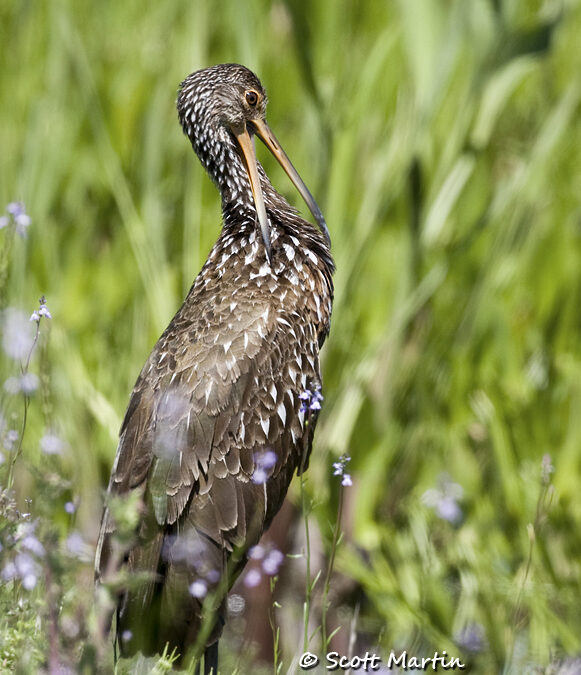
by Scott Martin Photography | Apr 16, 2011 | Birds, Blog, Shore Birds & Waterfowl
The Limpkin is a very unique bird and one of my favourites to photograph whenever in Florida. They are a large bird, 26-28 inches in length with a wing span of approximately 45 inches. Although morphologically they look like large Rails and skeletally they resemble Cranes, by design they are perfect for what they do, which is forage for Apple Snails – their primary diet. The Limpkin gets its name from its rather awkward appearance whether in the air with its stilting wing movement or walking along the ground with its less than smooth gait. Not surprisingly, a collective group of Limpkins is known as a “hobbling”. The world-wide population of the Limpkin is strong with numbers estimated at over 1,000,000 mostly in South and Central America. In Florida its numbers are on the decline due to the declining Apple Snail population created by urbanization. As a result the Limpkin is listed as a “Species of Special Concern” in North America.
This first image of a Limpkin is somewhat of an attempt to give the shot an artistic feel by purposely moving to have the purple flowers in front of the bird in the foreground…..not sure if it works, but it’s always a good exercise to experiment with composition whenever you have your camera out!
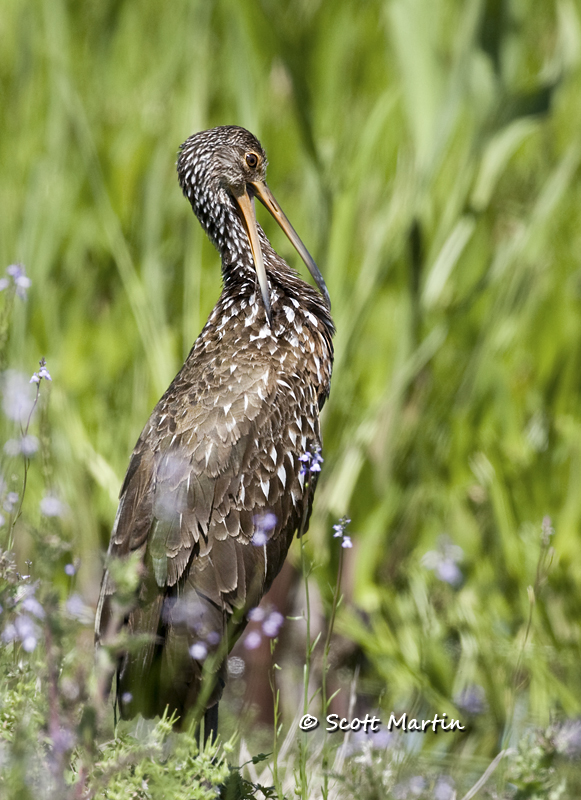
The following image shows the strong and powerful beak of the Limpkin. After finding an Apple Snail the bird places it on the ground, carefully lines it up and then impales the shell with its beak so it can then extract the snail. The design of the beak is perfect for doing this. It is a very interesting feat to observe and also hear the unique sound it makes.
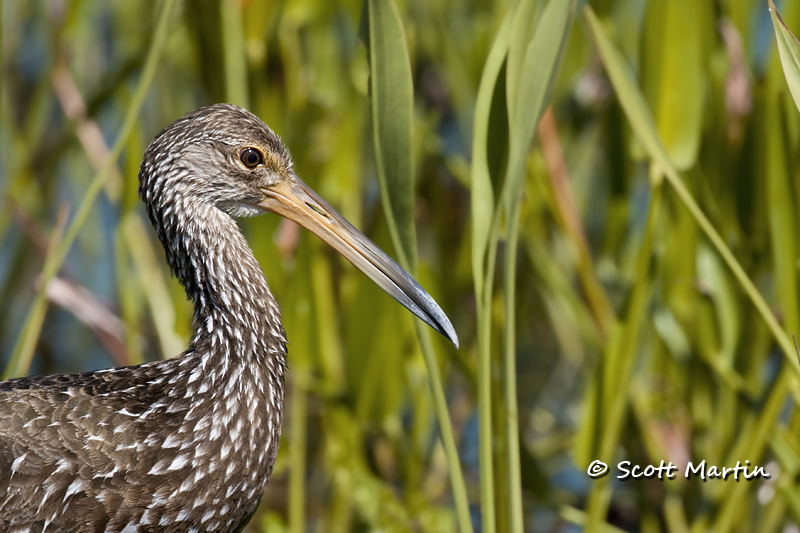
Happily bringing another Apple Snail to the waters edge for a snack.
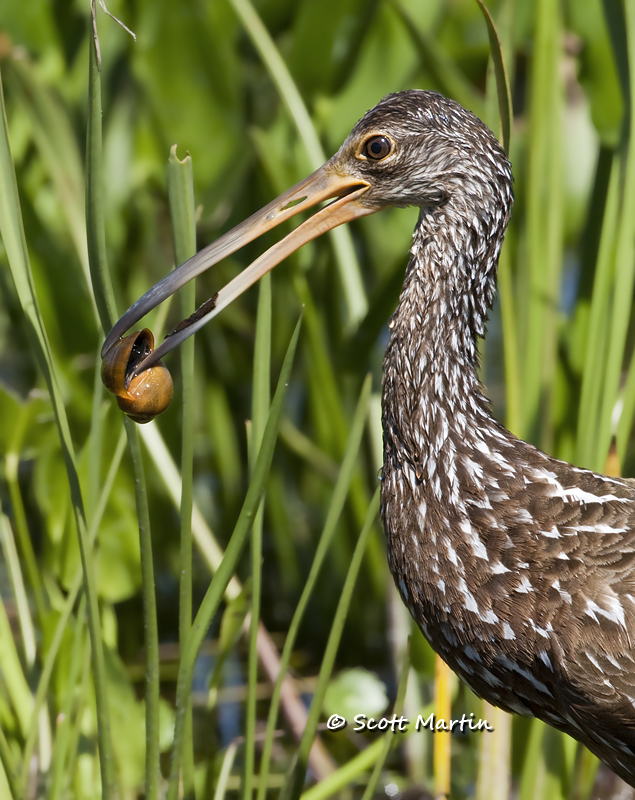
There are many more Limpkin images, including a number of in flight shots you can see in the Wading & Shore Birds Gallery
More Limpkin Images



































Follow Scott Martin Photography